Identification of Non-Stationary Magnetic Field Sources Using the Matching Pursuit Method
Abstract
:1. Introduction
2. The Matching Pursuit Algorithm with Four-Parameter Chirplet Dictionary
3. The Optimal Size of the Dictionary in the MP Algorithm
4. The Method for Source Identification
- Approximate a measured time-waveform into the linear expansion of chirplet atoms. The size of the dictionary chosen in the expansion of the measured signal is indicated on the basis of the percentage of the signal’s energy explained by the adaptive approximation. In practice, the approximation has good attributes if the reconstructed signal explains about 80% of the total energy. It emphasizes the coherence between the chirplet dictionary and most of the signal’s structures.
- Modify the obtained matrix containing the parameters of each detected Gaussian chirplet. Find the dominant components in the examined signal. Figure 11 shows the part of the block diagram of the virtual analyzer that examines the matrix of the chirplet parameter and computes the modified adaptive spectrogram. The normalized energy of single detected atom is compared with the inserting threshold. The rejection of a single chirplet is carried out using the procedure that compares the normalized energy of each elementary function with the threshold and removes the corresponding column of the matrix.
- Estimate the adaptive transform of the processed signal (the adaptive spectrogram). The calculation of the quadratic time-frequency representation of the signal is performed for the reduced matrix of the chirplet parameter.
5. Selected Analysis Results
6. Final Remarks
Acknowledgments
Conflicts of Interest
References
- Ahlbom, A.; Bergqvist, U.; Bernhardt, J.H.; Cesarini, J.P.; Court, L.A.; Grandolfo, M.; Hietanen, M.; McKinlay, A.F.; Repacholi, M.H.; Sliney, D.H. Guidelines for limiting exposure in time-varying electric, magnetic, and electromagnetic fields (up to 300 GHz). Health Phys. 1998, 74, 494–521. [Google Scholar]
- Karpowicz, J.; Gryz, K. Electromagnetic fields in the Polish legal system of managing ambient factors in the occupational environment. In Proceedings of the Workshop Measurements and Criteria for Standard Harmonization in the Field of EMF Exposure, Varna, Bulgaria, 28 April–3 May 2001. [Google Scholar]
- Palczynska, B. Spectral analysis of nonstationary low-frequency magnetic-field emissions from ship’s power frequency converters. In Proceedings of the Compatibility and Power Electronics CPE’09, Badajoz, Spain, 20–22 May 2009; pp. 375–380. [Google Scholar]
- Luo, X.; Shan, C.; Lv, G.; Yu, J. An efficient compensation method for ISAR imaging based on short time adaptive gaussian chirplet decomposition. In Proceedings of the IEEE Workshop on Advanced Research and Technology in Industry Applications (WARTIA), Ottawa, ON, Canada, 29–30 September 2014; pp. 891–894. [Google Scholar]
- Qing, Y.; Wang, J.; Sima, W.; Chen, L.; Yuan, T. Mixed Over-Voltage Decomposition Using Atomic Decompositions Based on a Damped Sinusoids Atom Dictionary. Energies 2011, 4, 1410–1427. [Google Scholar]
- Durka, P.J. Adaptive time-frequency parametrization of epileptic EEG spikes. Phys. Rev. E 2004, 69, 051914. [Google Scholar] [CrossRef] [PubMed]
- Ramya, S.; Hemalatha, M. A Review on Signal Decomposition Techniques. Middle-East J. Sci. Res. 2013, 15, 1108–1112. [Google Scholar]
- Puliafito, V.; Vergura, S.; Carpentieri, M. Fourier, Wavelet, and Hilbert-Huang Transforms for Studying Electrical Users in the Time and Frequency Domain. Energies 2017, 10, 188. [Google Scholar] [CrossRef]
- Khan, N.A.; Baig, F.; Nawaz, S.J.; Ur Rehman, N.; Sharma, S.K. Analysis of Power Quality Signals Using an Adaptive Time-Frequency Distribution. Energies 2016, 9, 933. [Google Scholar] [CrossRef]
- Khan, N.A.; Ali, S. Classification of EEG Signals Using Adaptive Time-Frequency Distributions. Metrol. Meas. Syst. 2016, 23, 251–260. [Google Scholar] [CrossRef]
- Chen, L.; Zheng, D.; Chen, S.; Han, B. Method Based on Sparse Signal Decomposition for Harmonic and Inter-harmonic Analysis of Power System. J. Electr. Eng. Technol. 2017, 12, 559–568. [Google Scholar] [CrossRef]
- Zhao, Y.; Li, Z.; Nie, Y. A Time-Frequency Analysis Method for Low Frequency Oscillation Signals Using Resonance-Based Sparse Signal Decomposition and a Frequency Slice Wavelet Transform. Energies 2016, 9, 151. [Google Scholar] [CrossRef]
- Mallat, S.G.; Zhang, Z. Matching pursuit with time frequency dictionaries. IEEE Trans. Signal Process. 1993, 41, 3397–3415. [Google Scholar] [CrossRef]
- Qian, S.; Chen, D.; Chen, K. Signal approximation via data-adaptive normalized Gaussian function and its applications for speech processing. In Proceedings of the ICASSP-92: 1992 IEEE International Conference on Acoustics, San Francisco, CA, USA, 23–26 May 1992; pp. 141–144. [Google Scholar]
- Gribonval, R. Fast matching pursuit with a multiscale dictionary of Gaussian chirps. IEEE Trans. Signal Process. 2001, 49, 994–1001. [Google Scholar] [CrossRef]
- Yin, Q.; Qian, S.; Feng, A. A fast refinement for adaptive Gaussian chirplet decomposition. IEEE Trans. Signal Process. 2002, 50, 1298–1306. [Google Scholar]
- Liu, Q.; Wang, Q.; Wu, L. Size of the dictionary in matching pursuit algorithm. IEEE Trans. Signal Process. 2004, 52, 3403–3408. [Google Scholar] [CrossRef]
- Palczynska, B. A Virtual Instrument for the Adaptive Analysis of Low-Frequency Magnetic-Field Emissions. In Proceedings of the IEEE 15th International Conference on Environment and Electrical Engineering, Rome, Italy, 10–13 June 2015; pp. 2159–2164. [Google Scholar]
- Palczynska, B. Application of matching pursuit based method to identify sources of time-vary magnetic field. In Proceedings of the IEEE 16th International Conference on Environment and Electrical Engineering, Florence, Italy, 7–10 June 2016; pp. 1–6. [Google Scholar]
- Bergeaud, F.; Mallat, S. Matching pursuit of images. In Proceedings of the International Conference on Image Processing, Washington, DC, USA, 23–26 October 1995; pp. 53–56. [Google Scholar]
- Ghofrani, S.; McLernon, D.C.; Ayatollahi, A. Comparing Gaussian and chirplet dictionaries for time-frequency analysis using matching pursuit decomposition. In Proceedings of the 3rd IEEE International Symposium on Signal Processing and Information Technology, Darmstadt, Germany, 14–17 December 2003; pp. 713–771. [Google Scholar]
- LabVIEW Advanced Signal Processing Toolkit Help, Adaptive Transform and Expansion. 2014. Available online: http://zone.ni.com/reference/en-XX/help/372656C-01/lvasptconcepts/tfa_adapt_trans_exp/ (accessed on 5 May 2017).


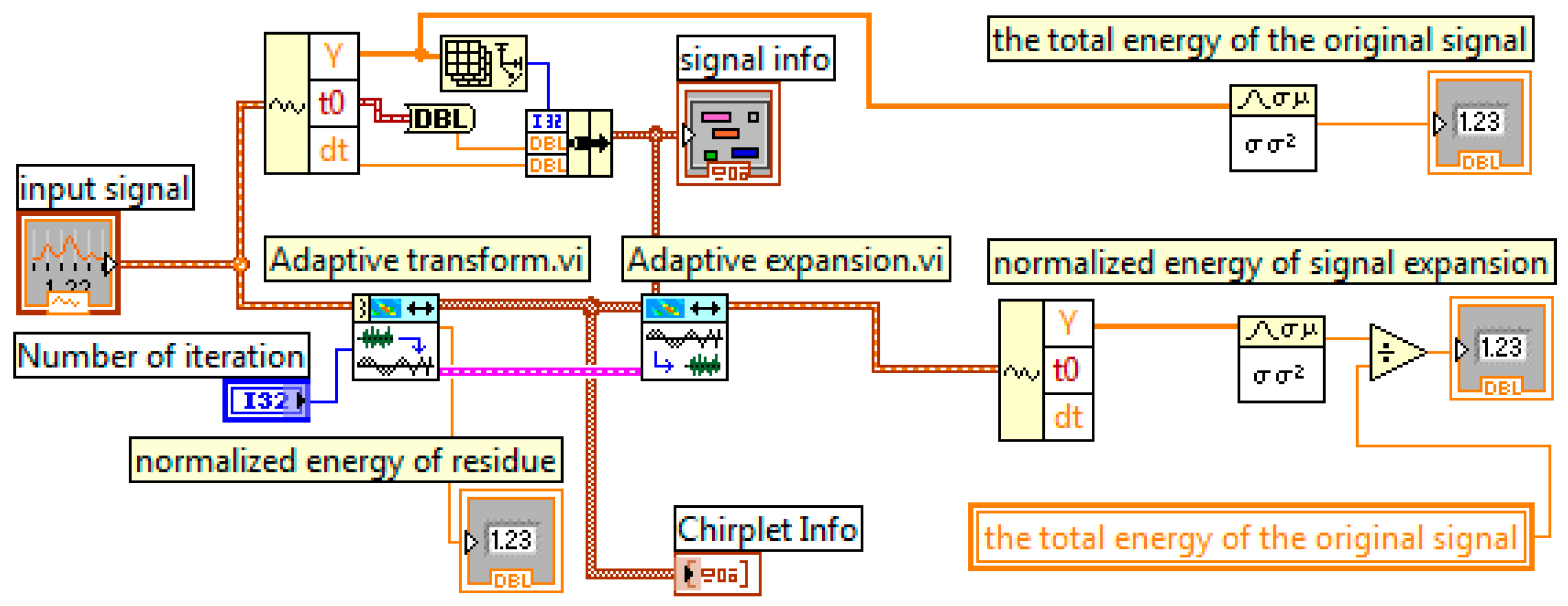


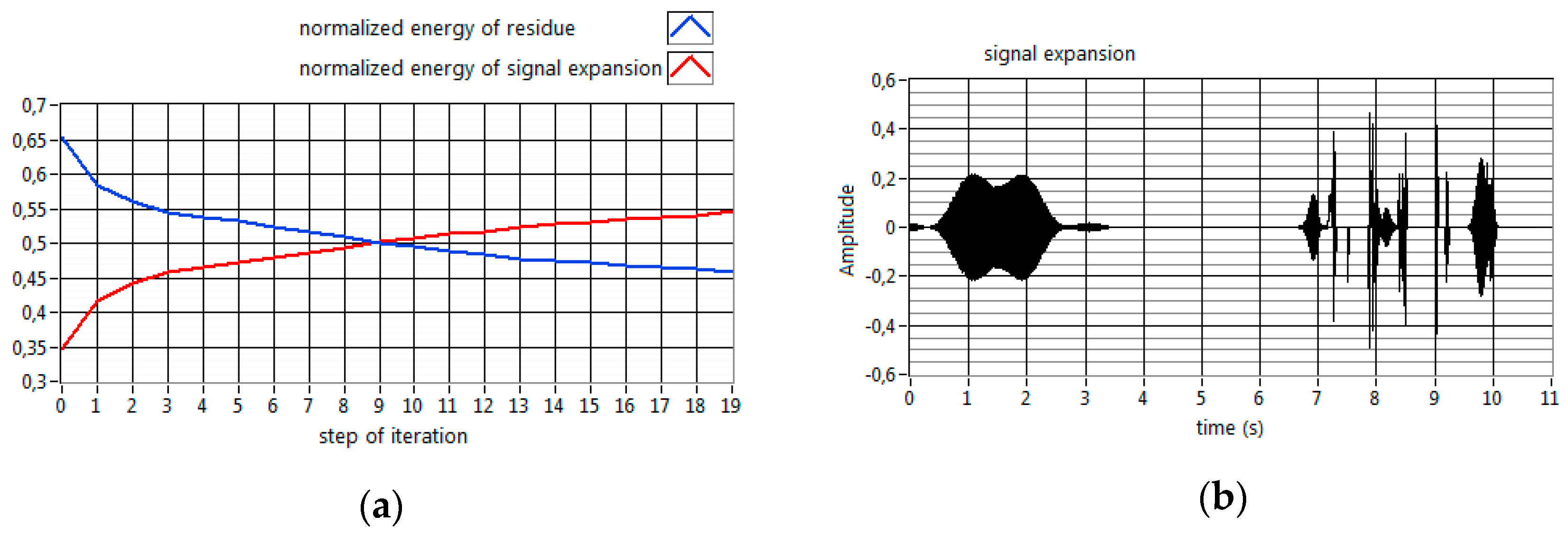


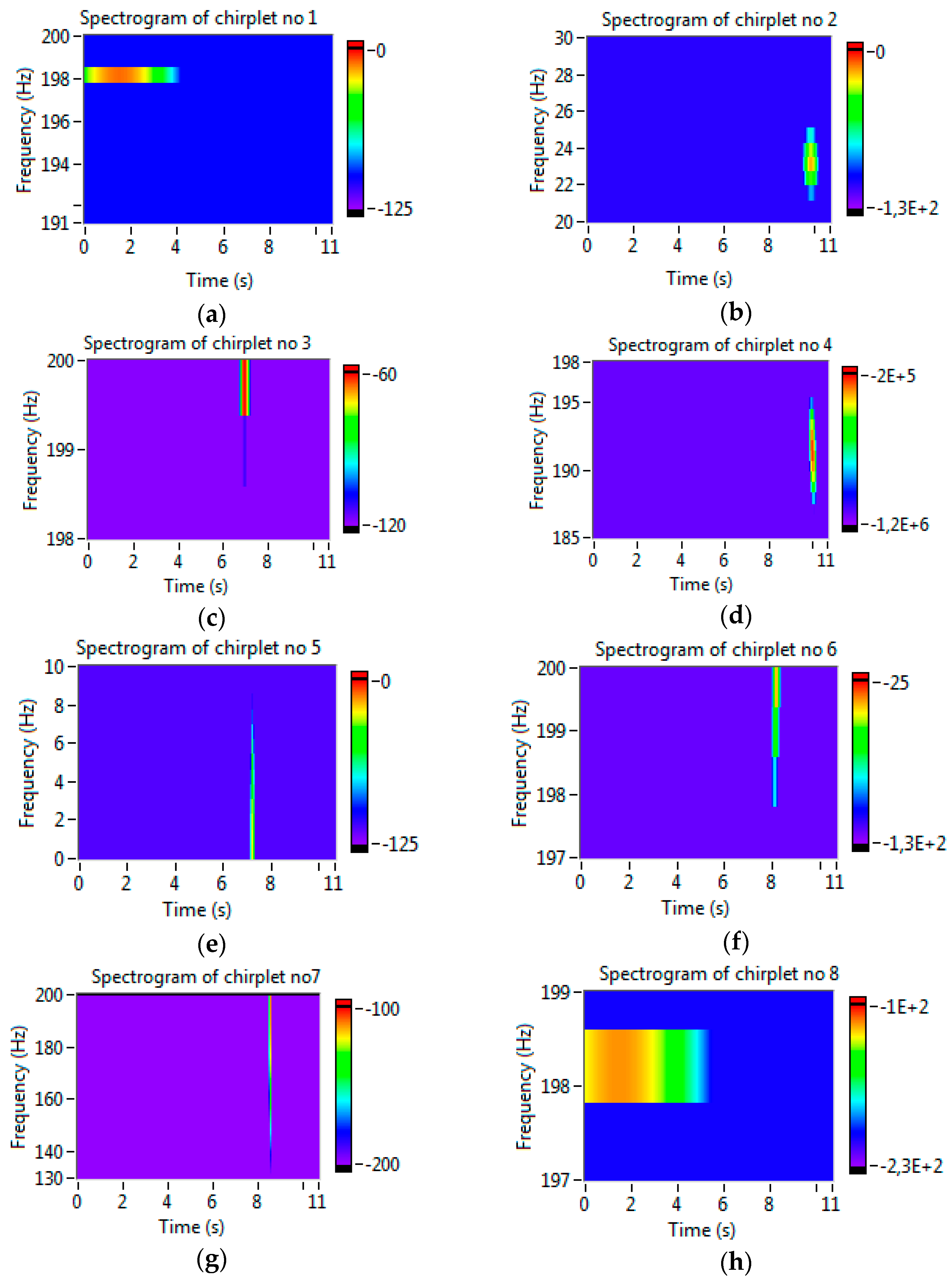
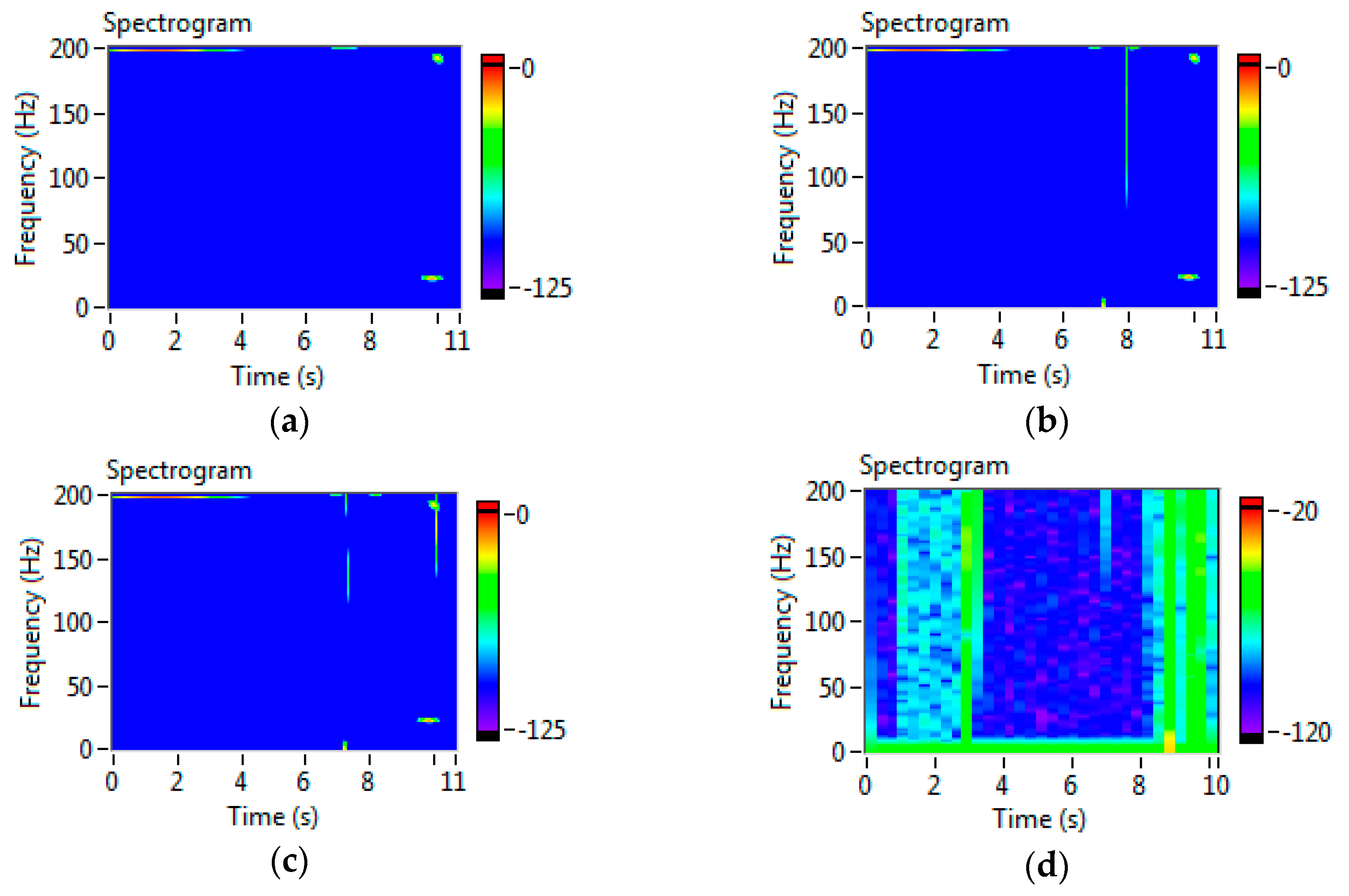
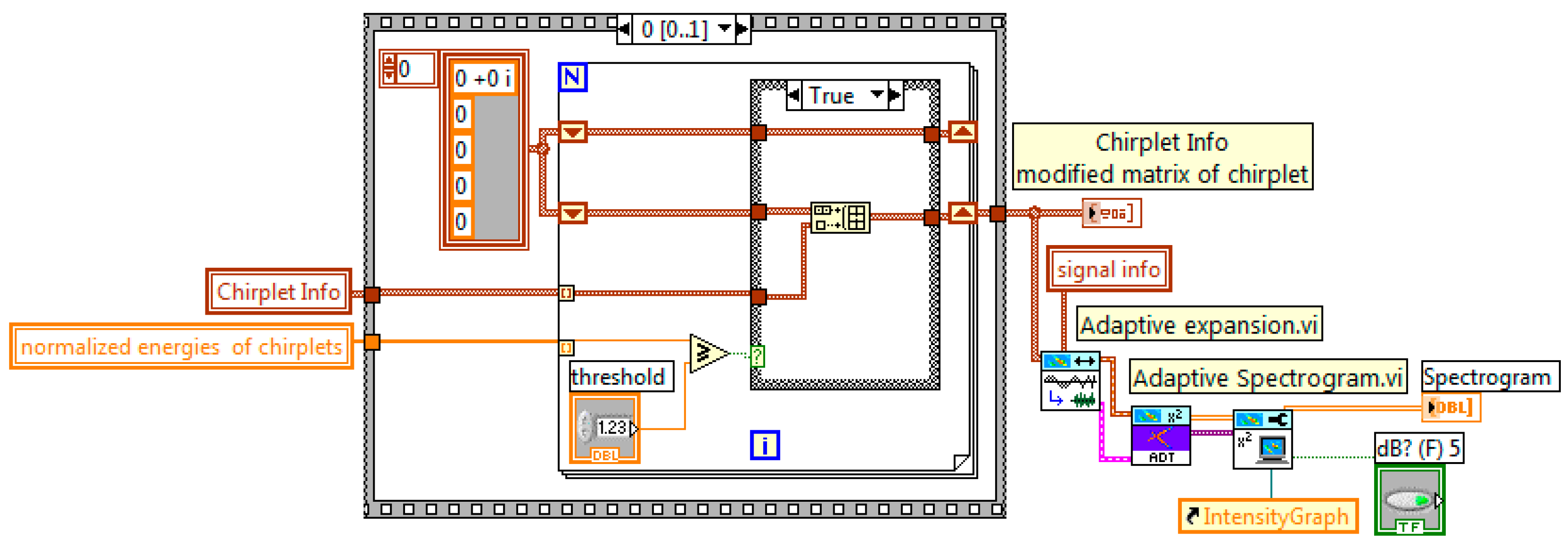
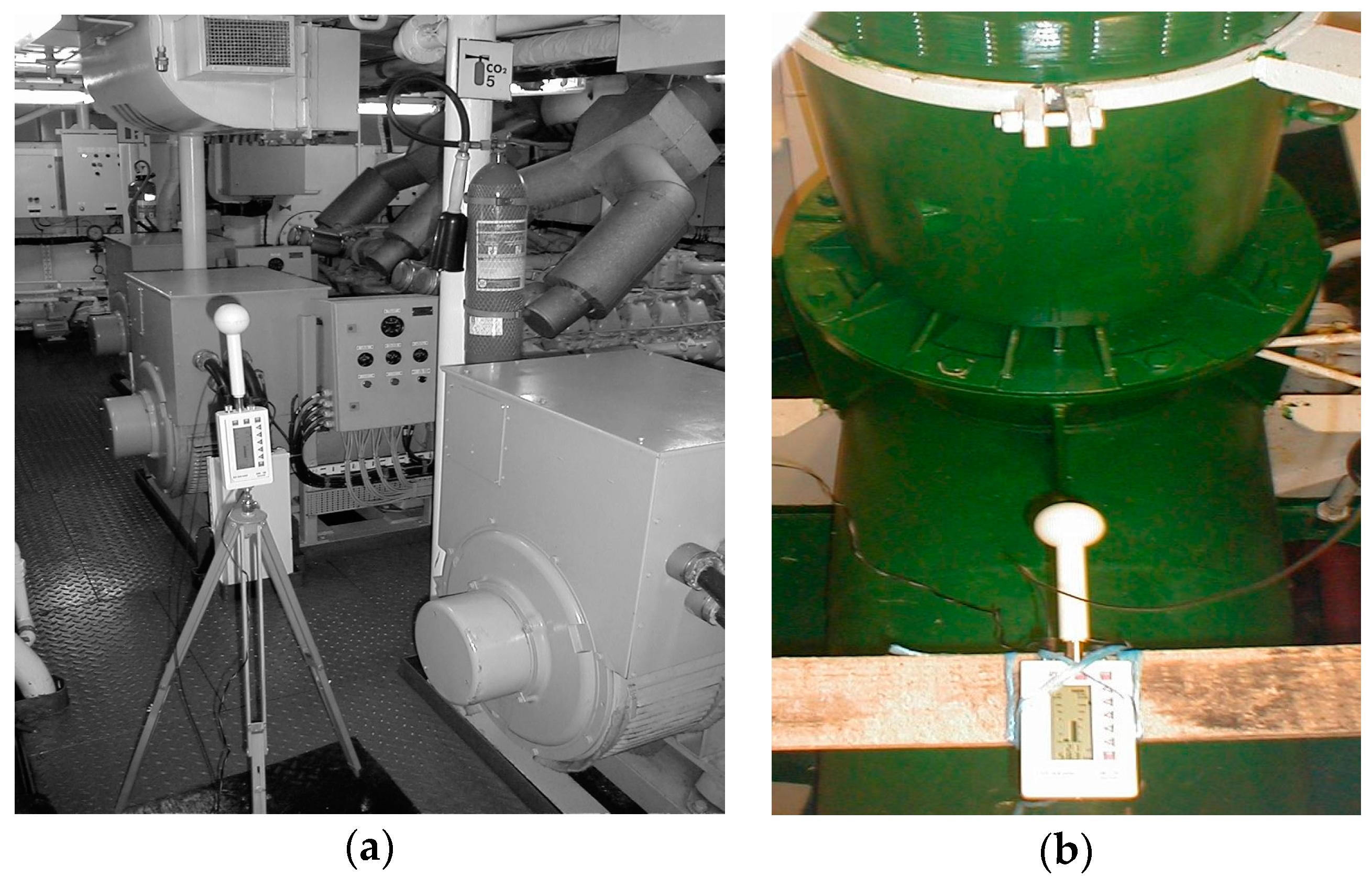
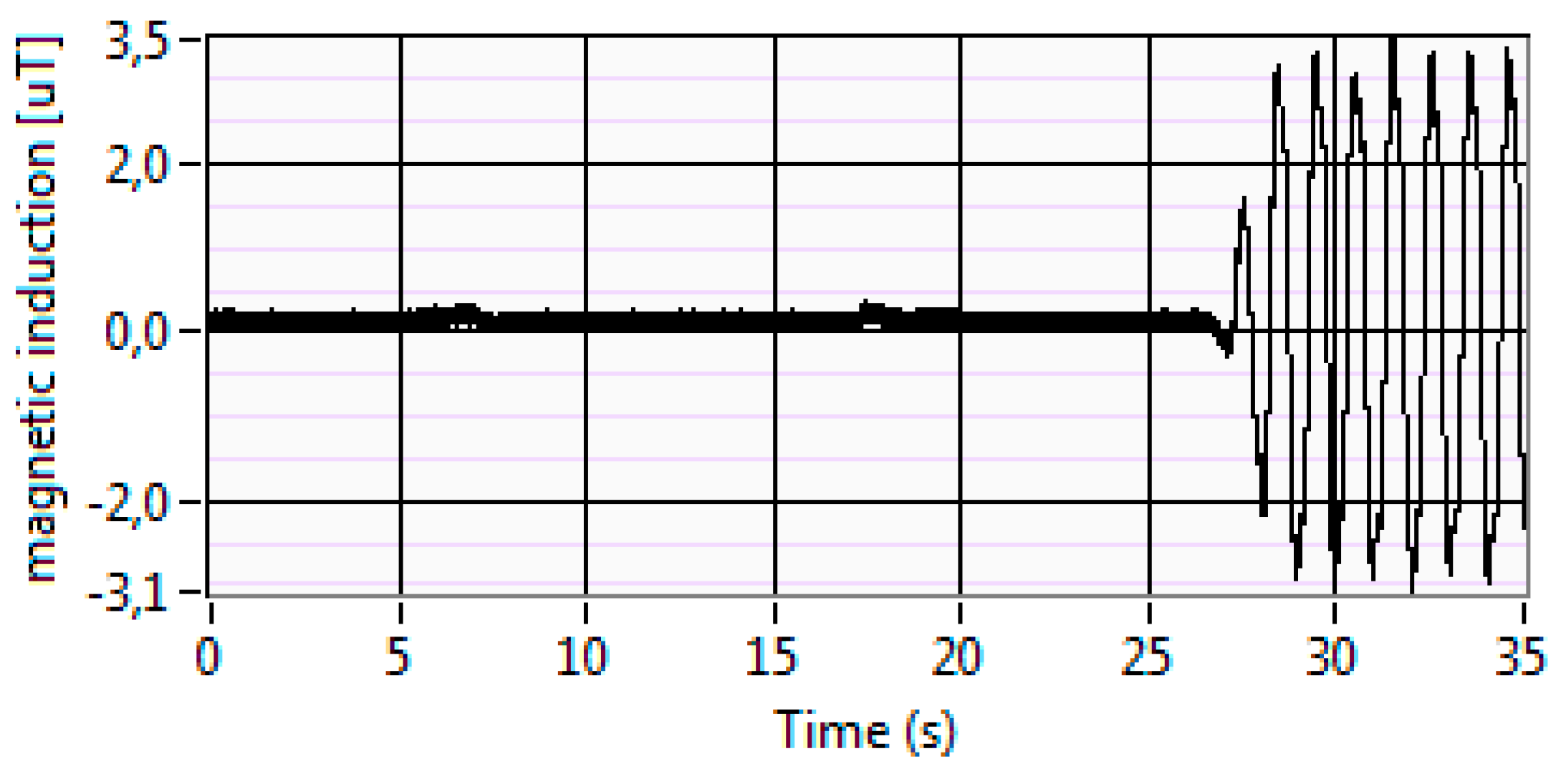

| Amplitude | Standard Deviation | Center | Frequency | Chirp Rate | Normalized Energy |
|---|---|---|---|---|---|
| 0.36 + 5.14i | 580 ms | 1.5 s | 198 Hz | 0 Hz/s | 0.59 |
| 2.16 − 0.78i | 76 ms | 9.8 s | 23 Hz | −1.6 Hz/s | 0.12 |
| −1.12 + 1.54i | 70 ms | 6.9 s | 199 Hz | −12 Hz/s | 0.044 |
| −1.1 + 0.22i | 37 ms | 10 s | 191 Hz | −47 Hz/s | 0.028 |
| 1.05 − 0i | 18 ms | 7.2 s | 4 Hz | 0 Hz/s | 0.012 |
| 0.93 − 0.3i | 79 ms | 8.2 s | 199 Hz | −52 Hz/s | 0.012 |
| −0.93 + 0.24i | 2.5 ms | 8.5 s | 170 Hz | −1 kHz/s | 0.013 |
| 0.56 + 0.73i | 900 ms | 1.5 s | 198.5 kHz | 0 Hz/s | 0.018 |
© 2017 by the author. Licensee MDPI, Basel, Switzerland. This article is an open access article distributed under the terms and conditions of the Creative Commons Attribution (CC BY) license (http://creativecommons.org/licenses/by/4.0/).
Share and Cite
Palczynska, B. Identification of Non-Stationary Magnetic Field Sources Using the Matching Pursuit Method. Energies 2017, 10, 655. https://doi.org/10.3390/en10050655
Palczynska B. Identification of Non-Stationary Magnetic Field Sources Using the Matching Pursuit Method. Energies. 2017; 10(5):655. https://doi.org/10.3390/en10050655
Chicago/Turabian StylePalczynska, Beata. 2017. "Identification of Non-Stationary Magnetic Field Sources Using the Matching Pursuit Method" Energies 10, no. 5: 655. https://doi.org/10.3390/en10050655





